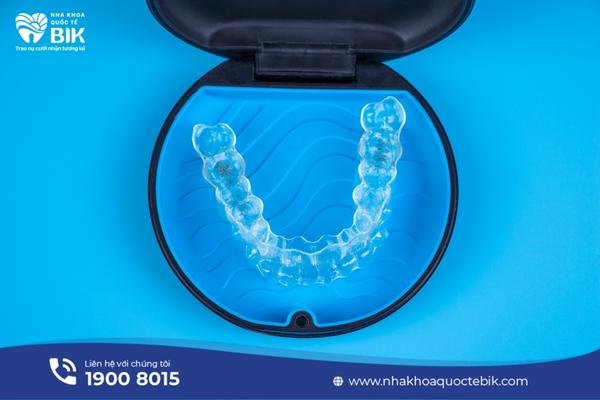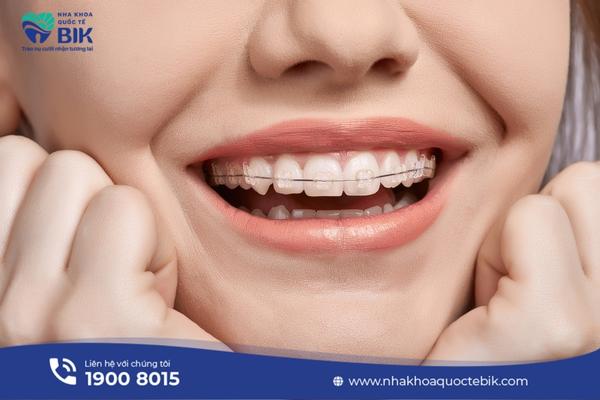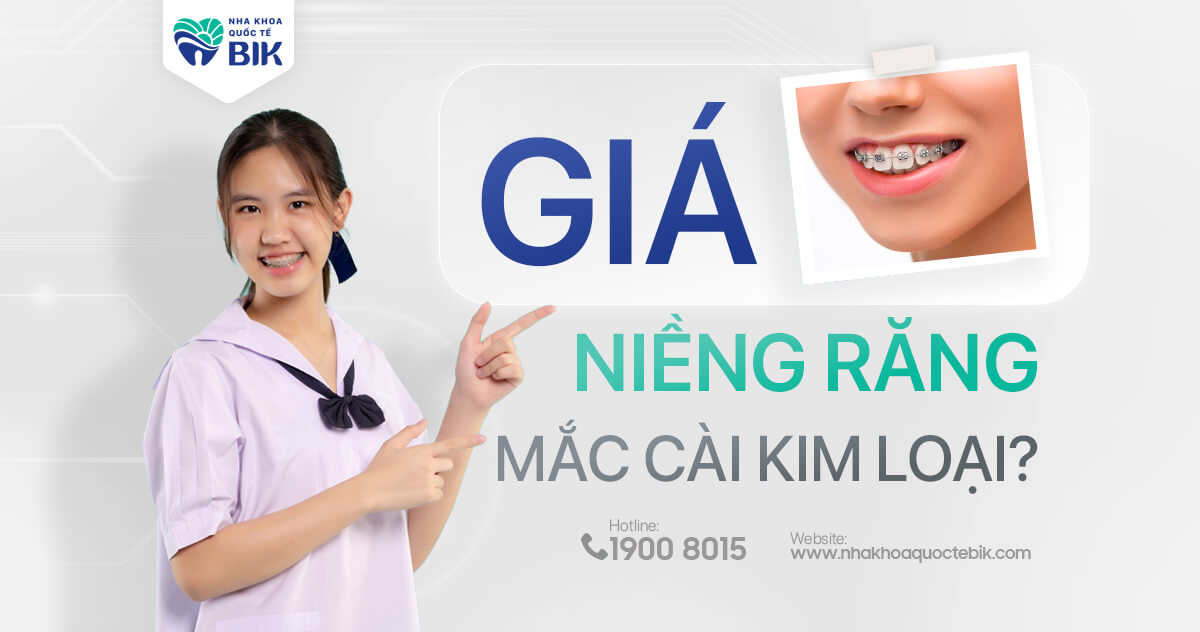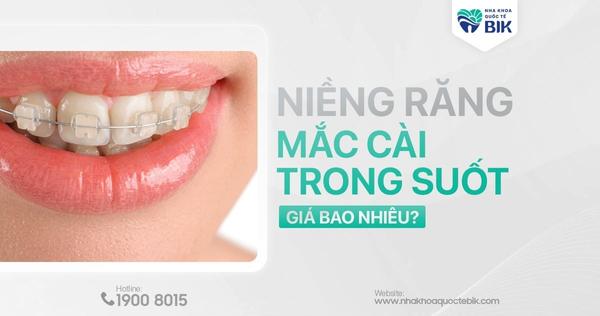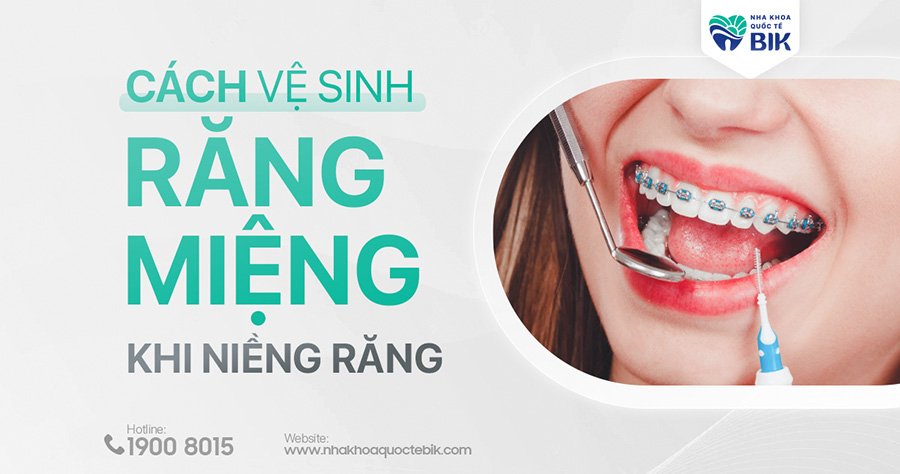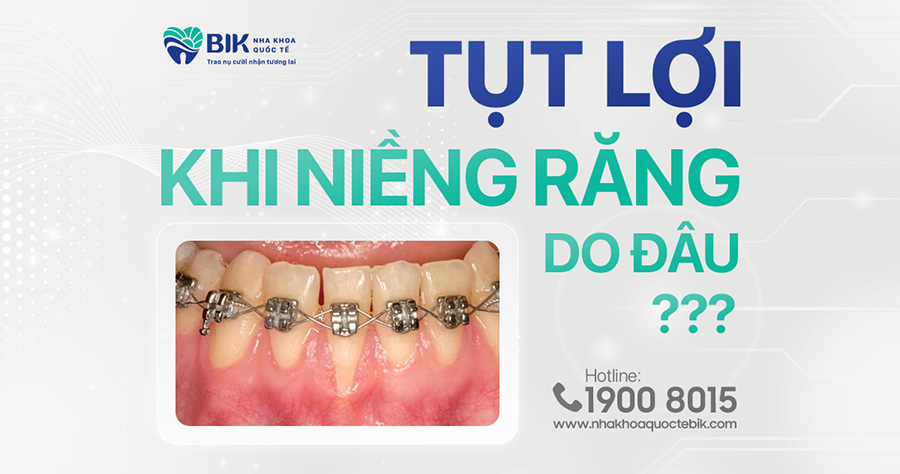
Gingival recession during braces is quite common and is caused by many different reasons. If this condition is not treated promptly, it will cause serious complications for oral health later on. Therefore, when you notice signs of gum recession during braces, you should see a doctor for prompt examination and treatment.
1. Signs of gum recession when wearing braces
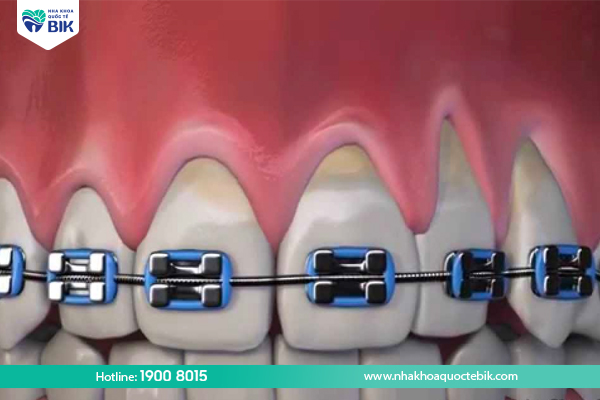
Gingival recession, also known as gum recession, is a phenomenon in which the tooth root is clearly exposed due to the gums moving deep inside the tooth root or due to the gradual loss of gums. The manifestation of this condition in the beginning will not be too obvious but will gradually appear after about a month.
In fact, this condition is not dangerous to health, but if not treated promptly, it can lead to dangerous complications. Some signs of gum recession are as follows:
– During the process of brushing or flossing, the teeth will bleed.
– The gums are narrowed, the tooth body is longer than normal.
– The gums are dark red and swollen.
– There is a slight unpleasant odor, especially when you first wake up.
– The teeth are slightly loose and become sensitive, gradually weakening.
– The teeth are easily sensitive when eating hot and cold foods.
2. Causes of gum recession when wearing braces
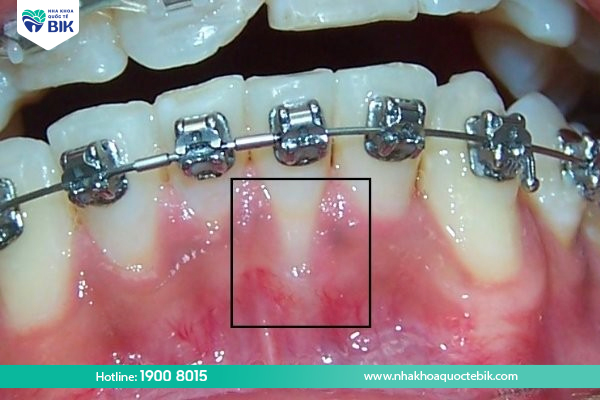
Gingival recession when wearing braces can occur due to the following reasons:
2.1. Due to dense dental plaque
The fixed wire and braces system on the tooth surface often makes oral hygiene difficult. If the oral cavity is not cleaned properly for a long time, it can cause dense dental plaque to form between the gums and the tooth root.
Dental plaque is a favorable environment for bacteria to grow and attack, causing gingivitis, receding gums, exposed tooth necks, etc.
2.2. Due to incorrect brushing
Many people have the habit of brushing their teeth with very strong force because they think that doing so will help clean their teeth better. However, the tissues around the teeth and gum tissue can be damaged by this. In addition, brushing teeth horizontally or brushing too hard from top to bottom can also damage the gums.
At this time, pain, swelling, bleeding, etc. appear in the gums and if not detected promptly or properly cared for, it will lead to receding gums when wearing braces.
2.3. Due to other diseases
Gingival recession during braces can also occur in people with oral diseases that are not completely treated before attaching the archwire and braces. At this time, the patient will suffer countless injuries due to the tightening force of the braces on the teeth. The condition will become more serious and much more difficult to treat.
2.4. Due to the doctor’s skills
In cases where the patient has weak teeth that are easily loose, the doctor will develop a suitable treatment plan, adjusting the tightening force gently to avoid damaging other soft tissues. If the doctor is not experienced enough, he will use too much force, causing the teeth and gums to be under too much pressure, causing the teeth to loosen and leading to gum recession.
3. Effects of gingival recession during braces
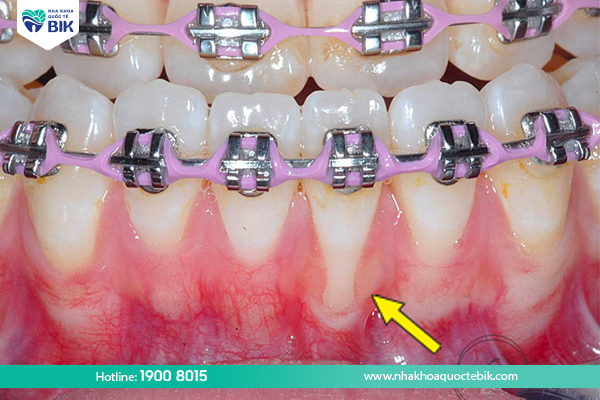
Gum recession when wearing braces can lead to the following effects:
3.1. Loss of aesthetics
Gum recession will make teeth longer and larger, disproportionate to the remaining teeth. This makes many people no longer confident when communicating or smiling every day, losing many opportunities in work and life.
3.2. Risk of oral diseases
Receding gums when wearing braces cause the tooth roots to be exposed and sparse, creating conditions for food debris to stick to the tooth roots. Over time, bacteria will grow and attack, causing a series of oral diseases such as periodontitis, gingivitis, tooth decay, etc.
3.3. Make teeth sensitive
When teeth are subjected to the force of tightening from orthodontic appliances, they become quite sensitive, but if the gums recede, this condition will become even more serious. At this time, the dentin is exposed, making chewing more difficult, especially when eating hot, cold foods or foods containing a lot of acid such as carbonated water, sour fruits, etc.
3.4. Permanent tooth loss
Usually, gum recession when wearing braces is difficult to detect in the early stages, so if not noticed and treated promptly, the soft tissues around the teeth will be attacked and gradually weakened, causing the teeth to loosen and possibly lose teeth permanently.
4. How to fix gum recession when wearing braces
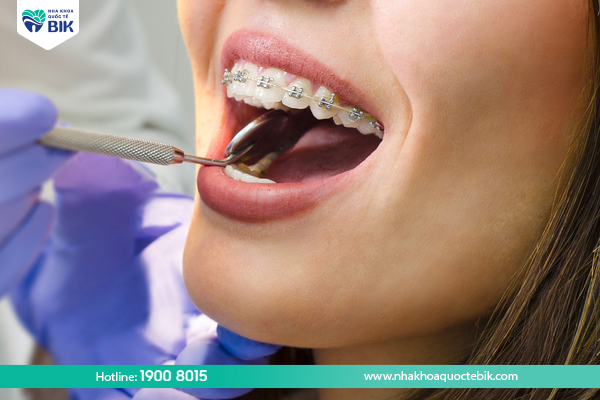
For each level of gum recession, there will be different methods to fix it as follows:
4.1. Mild gum recession
In cases where the customer only has mild gum recession when wearing braces but does not have pain, the doctor will clean the teeth and remove tartar. When the oral cavity is cleaned, the gum tissue will have favorable conditions to recover. After that, customers only need to use a soft-bristled toothbrush to clean their teeth every day.
If the teeth are often sensitive, they should use an anti-sensitive toothpaste or can take fluoride gel as prescribed by the doctor. The eroded tooth neck can also be fixed by using dental filling materials.
4.2. Severe cases
If the gum recession during braces has become severe, the most effective solution is gum grafting. Surgery will restore the gum tissue covering the tooth root.
Normally, this method will use a mucosal flap in the adjacent area to cover the area of the tooth root with receding gums. It takes about 6 weeks to 1 year for the wounds to heal completely.
5. How to prevent gum recession when wearing braces
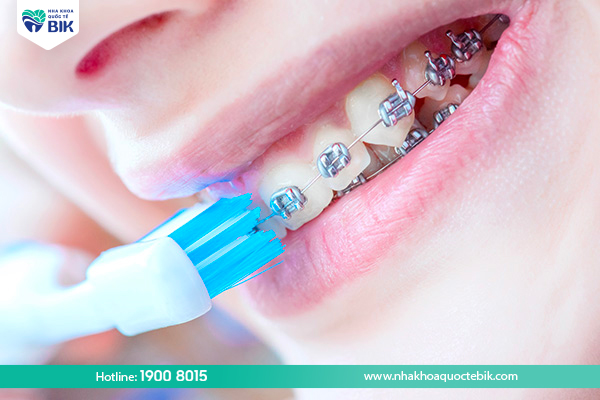
To minimize gum recession when wearing braces, customers should pay attention to proper oral care:
5.1. Proper oral hygiene
– Brush your teeth at least twice a day with a soft-bristled toothbrush or interdental brush to remove plaque on the tooth surface, especially at the braces.
– Use moderate brushing force to avoid damaging enamel and gums.
– Use a toothbrush containing a lot of fluoride to help strengthen teeth.
– Combine the use of dental floss or water floss to ensure complete removal of food debris in the teeth and bracket grooves.
5.2. Reasonable diet
– Limit foods high in acid and sugar such as soft drinks, sour fruits, alcohol, carbonated water, etc.
– Avoid eating foods that are too hot or too cold, causing tooth irritation.
– Supplement vitamins and fiber from natural ingredients such as vegetables, eggs, milk, etc. to ensure overall health.
5.3. Regular check-ups
– Customers should pay attention to regular dental check-ups as advised by the doctor to have the archwire and bracket system examined and checked.
– At the same time, the doctor will monitor and promptly correct any unwanted problems in time, avoiding serious complications later.
So gum recession when wearing braces is a fairly common condition and is caused by many different reasons. To minimize gum recession as well as other oral diseases, customers should pay attention to proper oral care and hygiene every day according to the doctor’s instructions.

